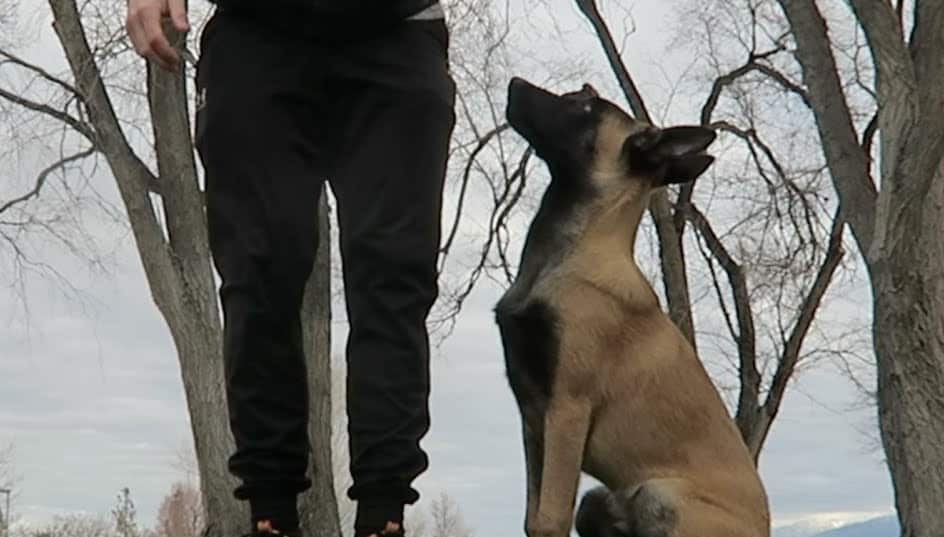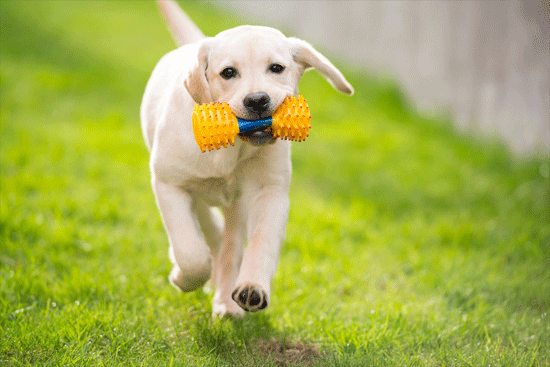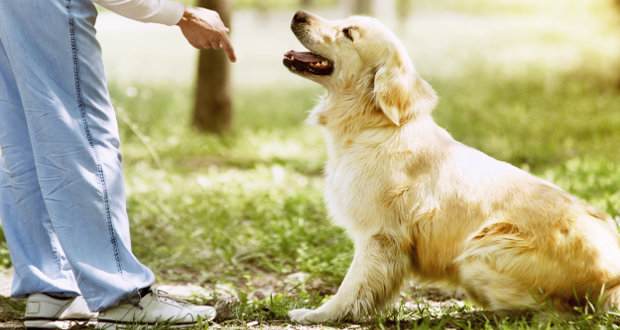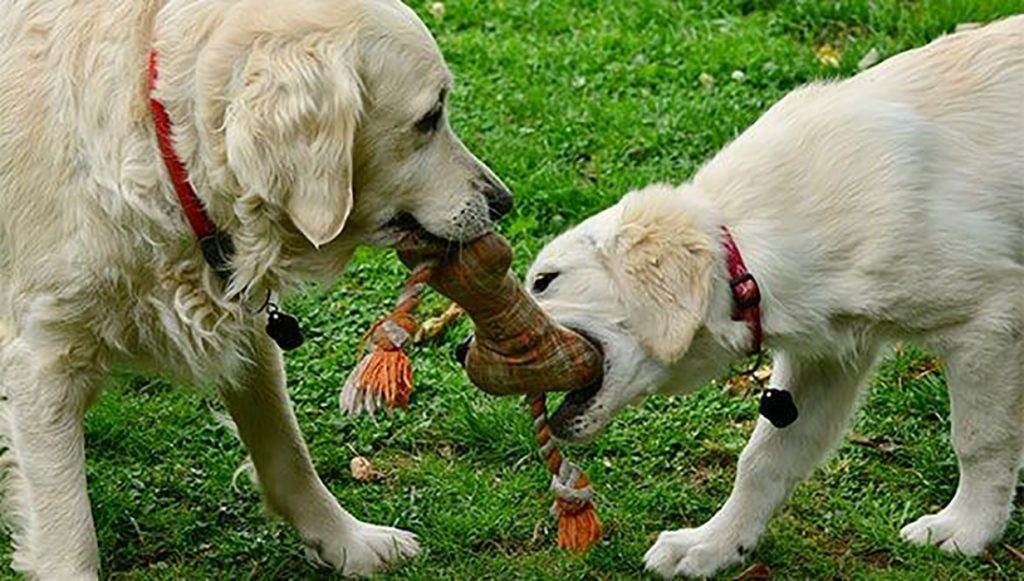Labradors, in general, do a lot of whining and it is some important to stop whining of Labor ads. This becomes more important when you are taking your dog to various places like Vet, Friend’s home, dog restaurants or your workplace. Even during AKC tests, they require your Lab to stay quiet, calm and composed.
Making your Labrador stop whining requires some effort from your side. The first step is to distract him to something else. The next step is to understand under what situations is the dog starting to whine. With repetition and patience, you can then make his whining totally under your control. The QUIET command from my 50 dog training commands is super helpful in this case.
Labradors are a social breed. It’s common for them to start whining on every other situation that comes their way. The above brief steps should help you get away with the action plan for managing the situation. When you can communicate with your Lab, it is a very easy job to stop their whining.
Even the SPEAK command can help which is a great way to distract your Labrador. More on the SPEAK command later in this article.
First, let us take a look at how Labrador breed dogs behave and act in various situations. This will help you understand the underlying reasons for their whining or barking.
Does Labrador Breed Barks and Makes a Lot of Noise?
As I mentioned above, Labradors are more social than other breed dogs which makes them ore noisy and active.
Apart from being social, it also comes down to the dog owners to manage their dogs from the beginning. While he is a puppy, the whining behavior can be controlled in a much better way.
Puppies like babies learn a lot from us. They see how grown-ups are encouraging them and pampering them and hence they act accordingly. If you as a dog owner don’t give much attention to his barking at home then he will also start to stop barking often which is barking for no reason but just to get attention.
Their vocals are much louder. They will bark whenever they need something and sooner, they learn that if they need anything or are not feeling comfortable, they have to bark.
Here are some samples of how loud Labs whine and how loud are their vocals:
So, to summarize this section, yes Labradors make a lot of noise but the great thing about them is they are great learners. You give them a few training sessions on how to stop barking and teaching a few related commands like QUIET and you are good to go.
In spite of so many tools and techniques being available for you to control the barking your dog, it should be an extreme case when you think of purchasing a dog bark collar.
Dog bark collars are not recommended for routine life and are made for special cases only.
With the process I outline in this article, you will learn a lot about making your Labrador stop barking at those special situations.
Your Involvement is a Must
The setting of Lab’s behavior starts from you. Your noisy Lab comes to you barking, you take it as a cute gesture and pick him in your lap. This goes and on and he knows that he gets loved whenever he makes those noises.
On the contrary, consider the scenario when the puppy barks and you take it as normal behavior and move on with your work. Every time he makes noise, you don’t look at him in the eye directly. With time, this puppy will know that making noise is useless and he will find other ways to get attention like cuddling and coming near you, etc.
See, the difference in how you behave with your dog makes a difference in his own behavior.
Some of the common situations when the Labrador will bark are:
- Playing games
- Seeing strangers
- Getting things done fast
- Needs food
- Feeling fearful
Here are 9 fun games that you can play with your dog:
https://www.youtube.com/watch?v=ZfenJoOLksw
Consider the scenario when you are playing with your Lab the retrieval game and you are slow in throwing and your Lab is super excited about it. He starts barking to make you throw fast. This is very common. Labradors are retrieval dogs so they get pumped up on playing the fetch game.
Barking in this situation is their communicating with you and hence it all depends on how you understand their language and act accordingly.
You will see many Dog to Human translator apps on the Google play store or Apple app store but they are not going to replace your intuition. They will only make you aware of various situations and how to understand your dog.
Keep it Low and Down to Earth
It is your behavior that encourages dogs to bark loudly. They first look for signals from you and then decide how loudly they have to bark. When you bring home a new puppy to your home, this behavior training should start from that day It would easy for someone who has owned multiple dogs in the past. But it’s a learning curve for first-time puppy owners.
You should never encourage their barking, instead give him signals that you are not happy with their whining. Your response to their barking can include stopping the play, looking at other ways, say the STOP/QUIET keywords or make sad faces, etc.
The reward that they get for action is an encouraging factor for them. This reward can be a treat, a ball, a massage on their head/body, letting them go out or picking them up in your lap.
The best I have experienced is to stay quiet and ignore him when he is barking. If that also doesn’t work then you should give them the QUIET command. You should never ever reward them while they are barking because they will associate the reward with their barking.
Your Labrador Retriever could be barking in the following scenarios:
- The back yard when playing
- Inside the crate asking for some attention
- On the sight of a guest or someone entered his territory
- His toy being taken away
Being Calm and Showing Patience is the Key
For first-time puppy owners, it may seem as hard work to manage puppies like this. Initially, keeping yourself self-aware of the behavior towards the puppy is so difficult.
Patience is the only factor that can make or break his training sessions and overall behavior training. The lab puppy will bark and you will run to him to check what is it that he needs. This creates a lot of issues going forward. This also is the root cause of separation anxiety in dogs when you leave them alone for office hours.
It may seem hard on the puppy when you don’t give him what he asks but it pays off in the long term. Allowing your Labrador retriever puppy indoors when he is barking to come inside is not a good decision. However, waiting for him to stop barking and then allowing him inside is a good decision.
How to Get Labrador to Stop Whining?
For your grown-up dog, it is difficult to teach him to stop whining but it is not impossible. In your case too, there are some important advice which if implemented, can give a lot of relief.
Some of the ways in which one can make the dog refrain from barking behavior are:
- Appreciating for maintaining silent behavior
- Not rewarding when he whines
- Using the SPEAK command to allow him to make noises
- Using the QUIET command to stop him from making loud noises
I have given you all the knowledge that you need to put into practice. This is quite similar to training a baby when you are a parent. Your dog is no less than a kid to you.
With this knowledge and working with your dog every day, you can definitely teach your Labrador to stop whining.
The underlying idea is not to use force with your dog but still manage them in a way that teaches him important lessons.
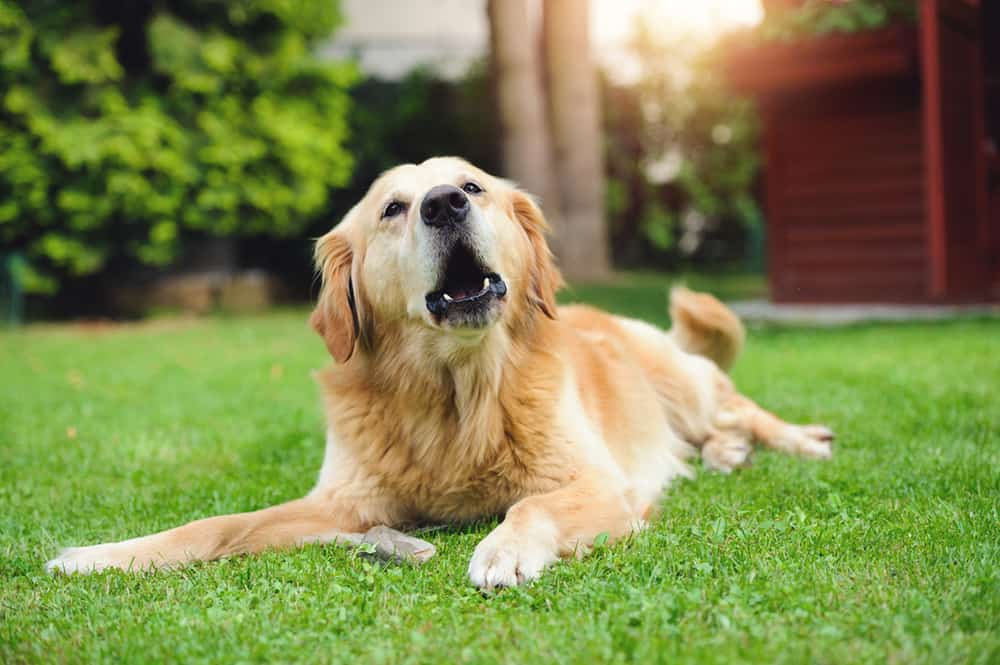
Use Cue Words to Your Help
There are two commands which come in handy when training your Labrador puppy or Dog. These two commands are the QUIET and SPEAK command. While most people would strike our the SPEAK command but I always recommend to first use the SPEAK command.
What SPEAK command does is that it teaches the dog when to speak and till how much time interval. You tell the dog when to speak by issuing the command.
The SPEAK command is easier to teach than QUIET command. Both these commands go hand in hand. You tell your dog when to bark and communicate and when is not the appropriate time to do the whining.
If you become successful in teaching both these commands then you will become pro in controlling the barking behavior of your dog.
I will go over both these commands in detail below so you are fully equipped with handling your dog who is whining a lot.
How to Teach a Dog to SPEAK on Command
Training a dog to speak on command can be easy if your dog already knows how to respond to popular commands such as “sit”,” down” and “Stay.” This is how to teach a dog to speak on command.
Step1: Pick a reward
Before embarking on your training, it’s essential to select a reward to reinforce the dog’s behavior. Consider picking something your dog loves. Additionally, try and vary the treats to make sure your dog won’t be bored.
Step 2: Issue a signal and name the behavior
Choose a word to represent the command. For example, you may use a word such as “bark,” “speak,” “talk,” etc. You can also combine the word with a hand sign. It’s essential to note that dogs learn visual signs faster than the spoken ones. Once you chose a particular word or hand sign, avoid changing to limit confusing your dog.
Step 3: Practice the command
Now practice the command. If you choose the word “speak.” Issue this command and repeat it after a few seconds before the dog barks. You voice, tone, and volume should remain the same every time you issue the command; this will ensure your dog will learn the trick faster.
Make sure you have several short training sessions for your dog. After a few days, you’ll note your dog has mastered the command. Any time you observe, your dog is losing interest in the training spot and resume when your dog is excited.
Step 4: Reward your dog
Every time your dog gets the command right, you should reward them by saying “ good,” “ thank you,” “ right,” “ yes,” etc. then follow by giving he dog her treat.
Step5: Eliminate the reward
Though treats are an excellent way of training your dog a certain behavior, once the behavior is learned, you need to stop the treats to avoid distracting your dog. Treats will also slow the response time at this level. Once you’ve noted your dog has learned to respond to the speak command, stop issuing treats.
Step 6: Practice in different environments
After your dog has mastered to respond to the speak command and they can do this without rewards, it’s time to advance your training to different environments. If you were practicing, in your house you can shift your training outdoors in the lawn, or public places. This ensures your dog can respond to the command in any location.
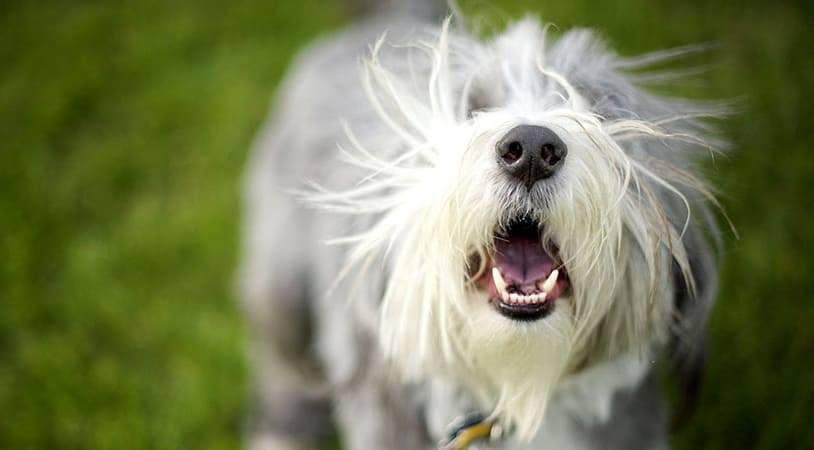
How to Teach a Dog to be QUIET on Command
Dogs bark as a natural instinct, they will bark to alert the owner of an intruder, or they may do so when they are fatigued among other reasons. If your dog has a tendency to bark without any meaningful reason, as the pet owner you’ll have nightmares. But you need not worry if your dog barks excessively; you can learn how to teach a dog to be quiet on command. These are the steps to follow.
Step1: Train them to speak
You’ll note that it’s usually very easy to train a dog to quiet on command after they already know how to speak on command. Thus, start by training your dog to bark on command. You can use a trigger such as ringing a bell to make them bark. Once they bark, rewards them handsomely with treats.
Step 2: Train them to stop barking
After your dog has learned to speak on command, it’s the high time to teach them to quiet on command. Select the word you’ll be issuing to signal them to stop barking. You may use the word “stop,” “quiet,” “no,” etc.
When your dog is barking issue the quite command to stop them; every moment your dog responds positively to your command, you’ll need to reward them with a treat. You can choose to accompany your treat with verbal praise if you like. For example, say “thank you,” “that’s right,” “good,” “and correct,” etc.
Step3: Practice! Practice! Practice!
Your dog will not learn how to quiet on command in a single day. You’ll need to organize several short practice sessions one or two per day for several days until you’re sure your dog has mastered how to stop barking on command.
Step 4: Phase out the treat
As you advance in your training, you need to phase out the treat gradually. You’ll achieve this by increasing the time you issue a treat to the dog after they stop barking to a point where you’ve ultimately phased out the treat completely. At this point you can remain with verbal praises only.
Step 5: Advance to new or more challenging places
Once your dog has mastered how to stop barking on command, you need to train them in different environments. For example, you can take them to a public park or places where there are many distractions if they were practicing in a distraction-free environment.
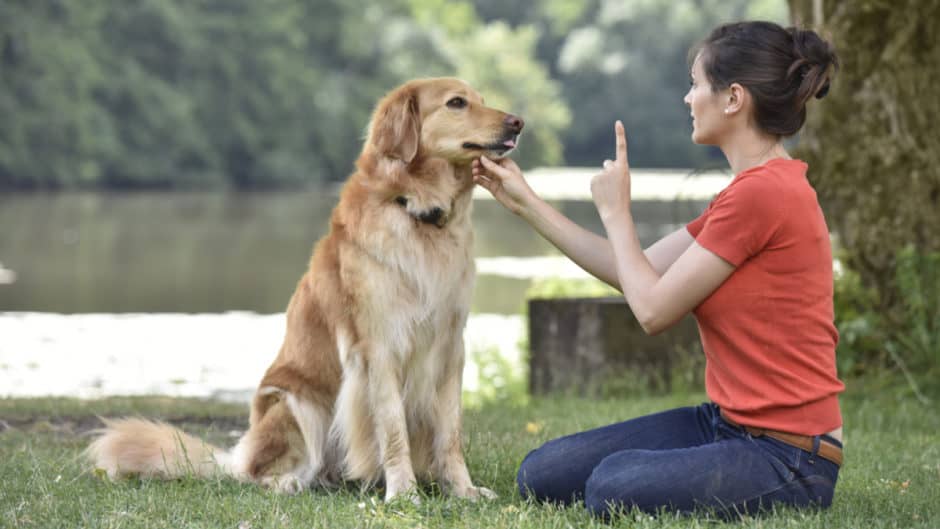
Conclusion on Why is My Dog Whining All of a Sudden
Making your Labrador Retriever dog stop whining is a process that starts when he is puppy but if you are late to it then also with proper training and patience, you can get the desired results.
Not every situation is appropriate for dogs to start whining. This results in the need to control their whining behavior. The process of training the dog involves 2 steps.
Firstly, you don’t want to encourage whining by ignoring them when they bark so as to teach them that barking won’t let them get anywhere. These early signs are what make a dog stubborn with time and then the dog is given all the blame.
Secondly, using the SPEAK and QUIET commands which have taught you step by step in the above 2 sections. If not already, then you should start training your Lab puppy or dog on those commands.
Discipline and patience from side go a long way in training them. In fact, these two aspects of your nature apply to all kinds of trainings.
Your dog also has a brain and it learns like any other brain. Initially, the success would look a distance truth but if you stay persistent, the results will be in front of your eyes. You see so many dog trainers and dog owners behaving like a pro with their dogs. All of that is possible with spending time with the dog daily and maintaining a routine. The dog’s brain learns behavior from observation and practicing it.
References
- https://open.bu.edu/bitstream/handle/2144/1068/byeskimodogsledk00huttuoft.txt?sequence=3
- https://research.library.mun.ca/7073/1/Blake_Dale.pdf
Table of Contents

